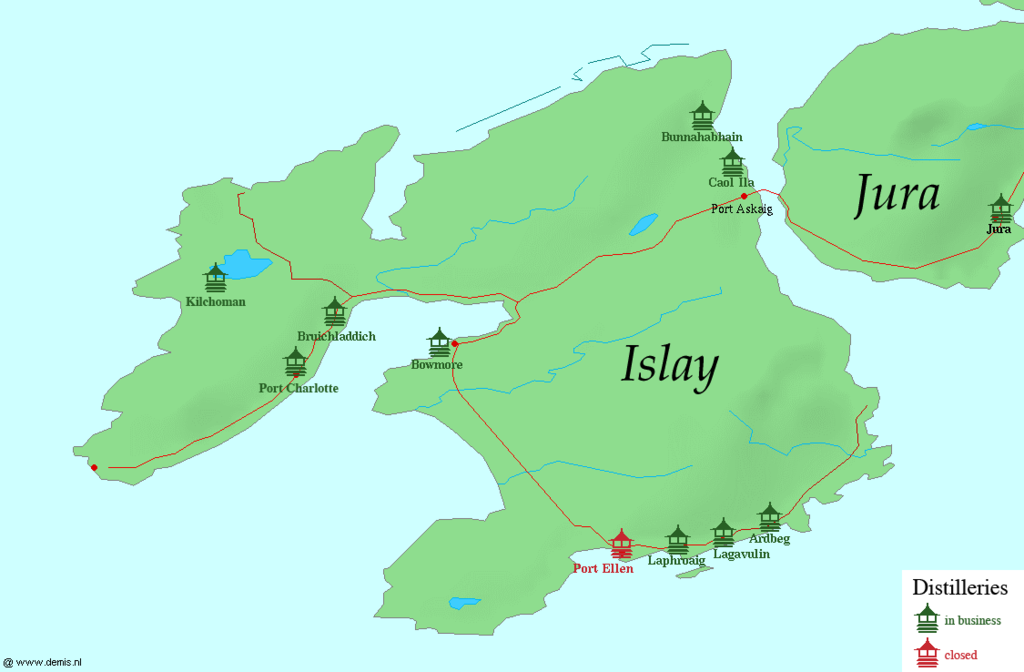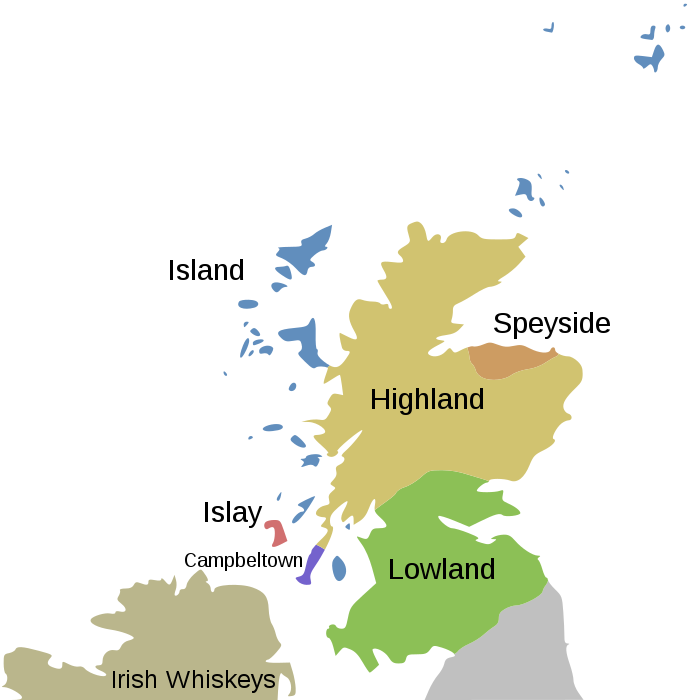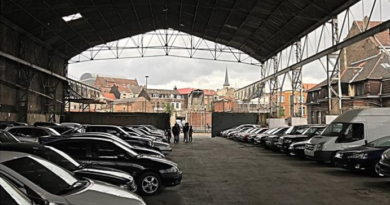Welcome to Islay: the land of Whisky
If you have been inspired by Belgium’s First Whisky Festival to carry your research to the next level, then there is no better place to plan to make a start this summer than the Hebridean Island of Islay on the West coast of Scotland.
With a population of just over 3,000 inhabitants, there are no less than eight whisky distilleries on this 25 mile long island making it the densest concentration of whisky production in the world. A ninth distillery starts production this month. This concentration is due in part to the natural availability of barley, peat for malting and pure water, which have contributed to making Islay a centre of excellence for whisky. But also, the islanders take a real pride in their product, and have been careful to maintain the highest standards of quality.
All of the whisky produced on the island is delicious, ranging from heavily peated single malt whiskies such as Bowmore, Laphroaig, Bruichladdich and Lagavullin to subtler and more delicate flavoured drinks like Ardbeg. Most of the distilleries also offer their own tastings and distillery tours, and there is something for every taste. Whilst some production is bottled and sold as single malt, the bulk of the whisky distilled on the island is sold on for blending.
But there is much more to the island than whisky distilleries. There are spectacular golden beaches and the island is an ornithologist’s paradise, with viewing opportunities for golden eagles and migrating geese. It is one of the few areas in Europe where the rare Corncrake has made a successful comeback, thanks to the re-introduction of more environmentally friendly methods of farming.
Finlaggan on Islay was the original home and base of Macdonald of Macdonald, the Lord of the Isles, whose dynasty ruled the hebridean islands in the 14th and 15th centuries when most of Scotland was most easily accessed by sea. They defended their territory against the kings of Norway, Ireland and Scotland.
Islay is also a good base from which to visit nearby Jura, where George Orwell wrote the novel 1984 in a remote farmhouse, to take a boat trip to see the whirlpool of Corryvreckan, and to explore the island of Colonsay which is a spectacular and unspoilt wildlife sanctuary nearby.
Islay can be reached by flights from Glasgow or by the Caledonian MacBrayne ferry from Kennacraig, which has several sailings daily. For places to stay on the island there are many options advertised for booking accommodation on the website of the local newspaper “Ileach”. If you decide to go by car, it is a real pleasure to drive on the single track roads on the island, as all drivers are courteous and wave to great each other as the cars cross.
This year Islay commemorates the tragic loss of life following the sinking of the troop ship SS Tuscania which was torpedoed in 1918; the Islanders braved heavy seas and freezing waters to rescue as many victims as they could from the waters. It is a tribute to the caring nature of the hebrideans that overnight they made by hand a stars and stripes flag copied from an illustration in a book in the library of Islay House so that the American soldiers who died when the troop ship sank could be buried with honour under their own flag. The flag is displayed in the Smithsonian Museum in Washington DC.
Once you have visited this magical island, you will appreciate your glass of single malt even more as the taste will remind you of the complex flavours and aromas that are somehow distilled into the whisky-making it a distinctive spirit of true hospitality.





